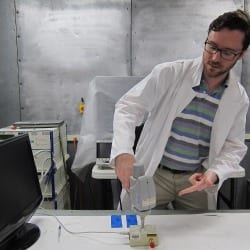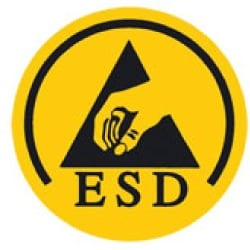 Our test chambers have waveform verification setup and tables that accommodate a variety of EUTs. The Electrostatic Discharge (ESD) chambers have the capability to vary the relative humidity from 15% to 65% and temperature from 18°C to 24°C.
Our test chambers have waveform verification setup and tables that accommodate a variety of EUTs. The Electrostatic Discharge (ESD) chambers have the capability to vary the relative humidity from 15% to 65% and temperature from 18°C to 24°C.
As the ESD event is largely dependent on environmental conditions such as ambient temperature and humidity levels, having this specialized chamber allows for the variation of environmental conditions to see the impact on the device’s performance. This helps determine the worst-case environmental conditions of a given device.

For compliance testing in accordance with EU and International requirements, electrostatic discharge testing is performed per IEC/EN 61000-4-2. Ruggedized products that are used in military or commercial avionic applications are subjected to higher levels of ESD. ESD Testing simulates events directly to an electronic product or through a nearby metallic surface.
We strongly recommend performing ESD testing where environmental variables can be precisely controlled. This can be particularly useful during the device’s development cycle. At the same time, it makes debugging for ESD much easier and more effective.



